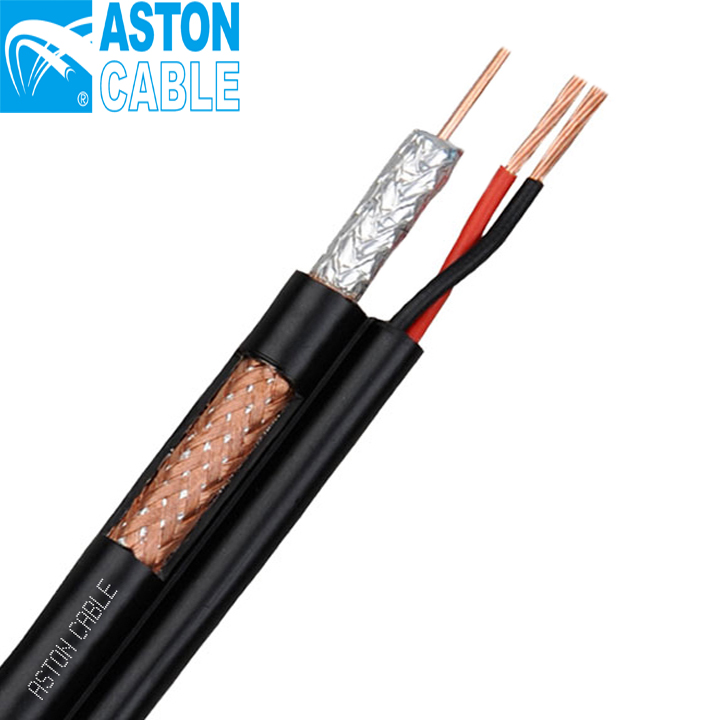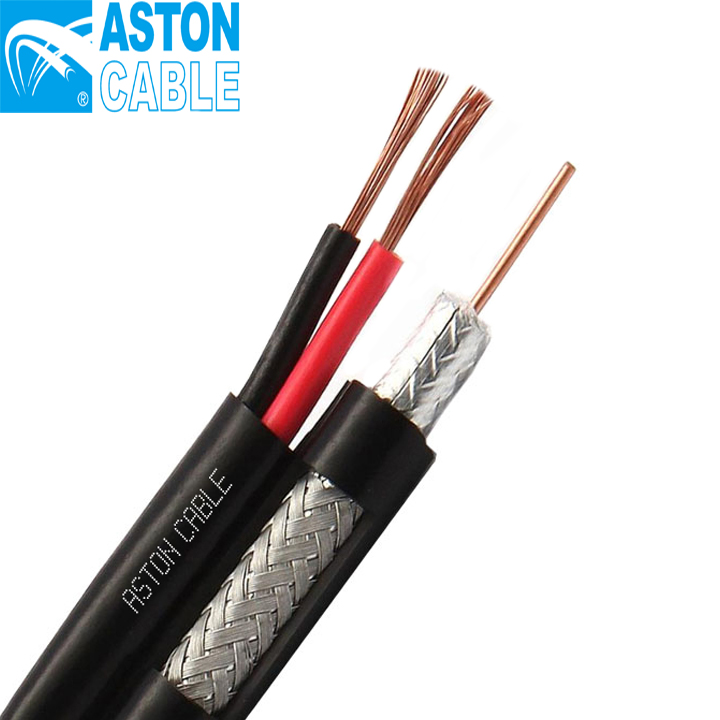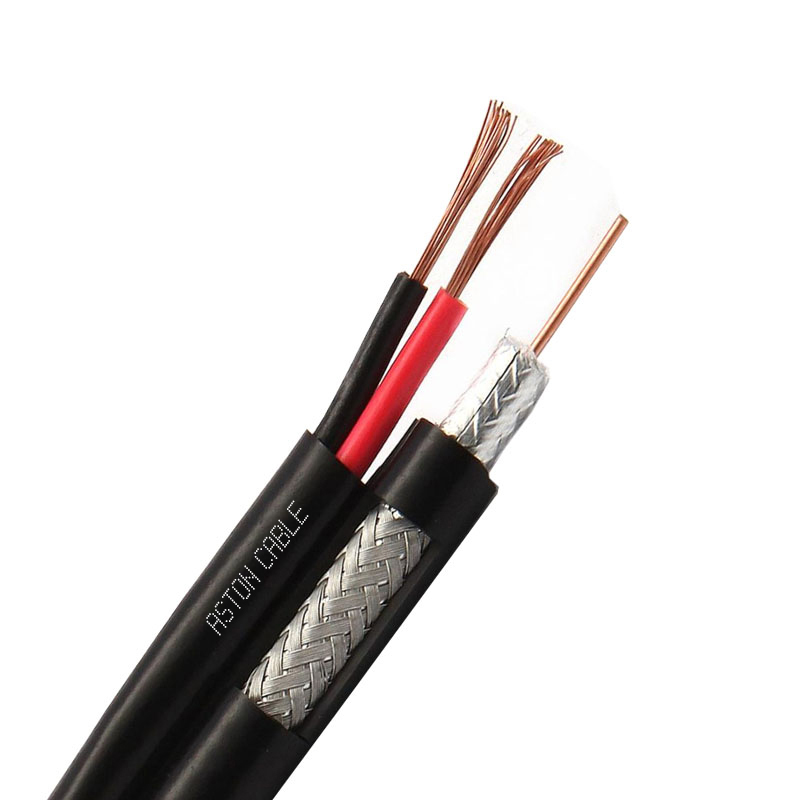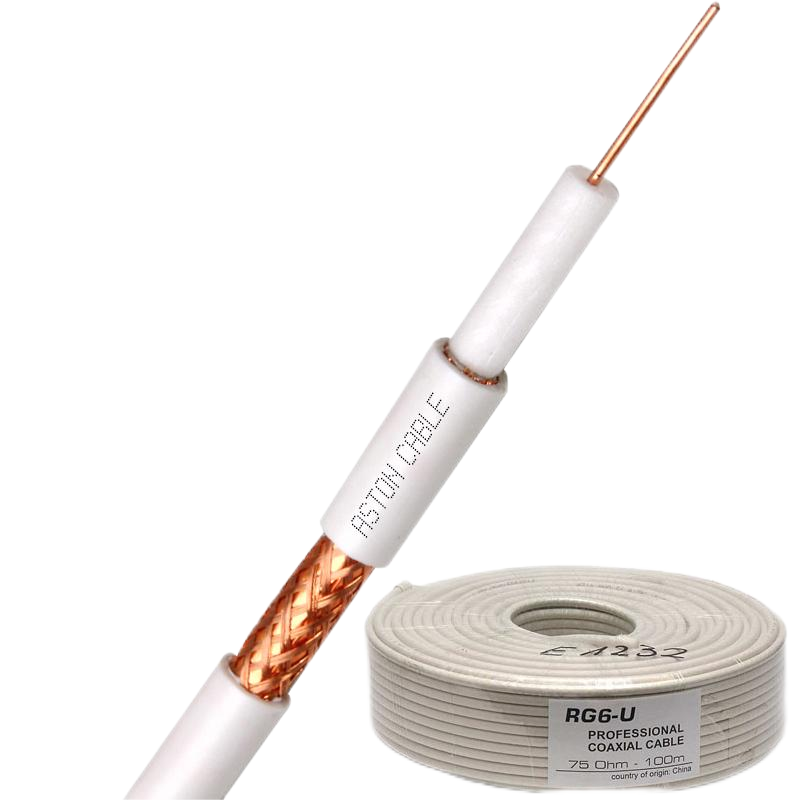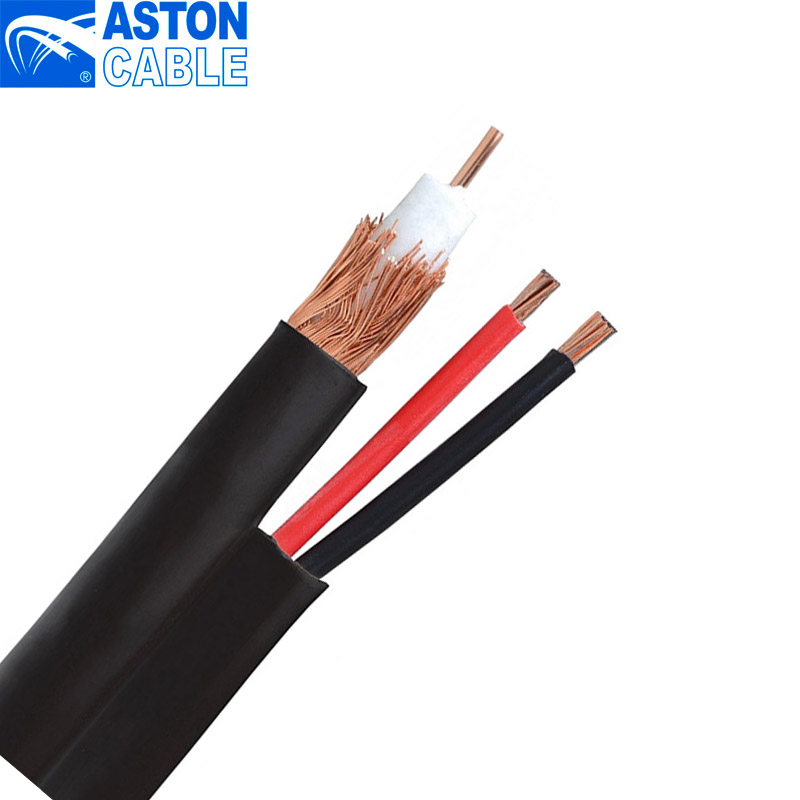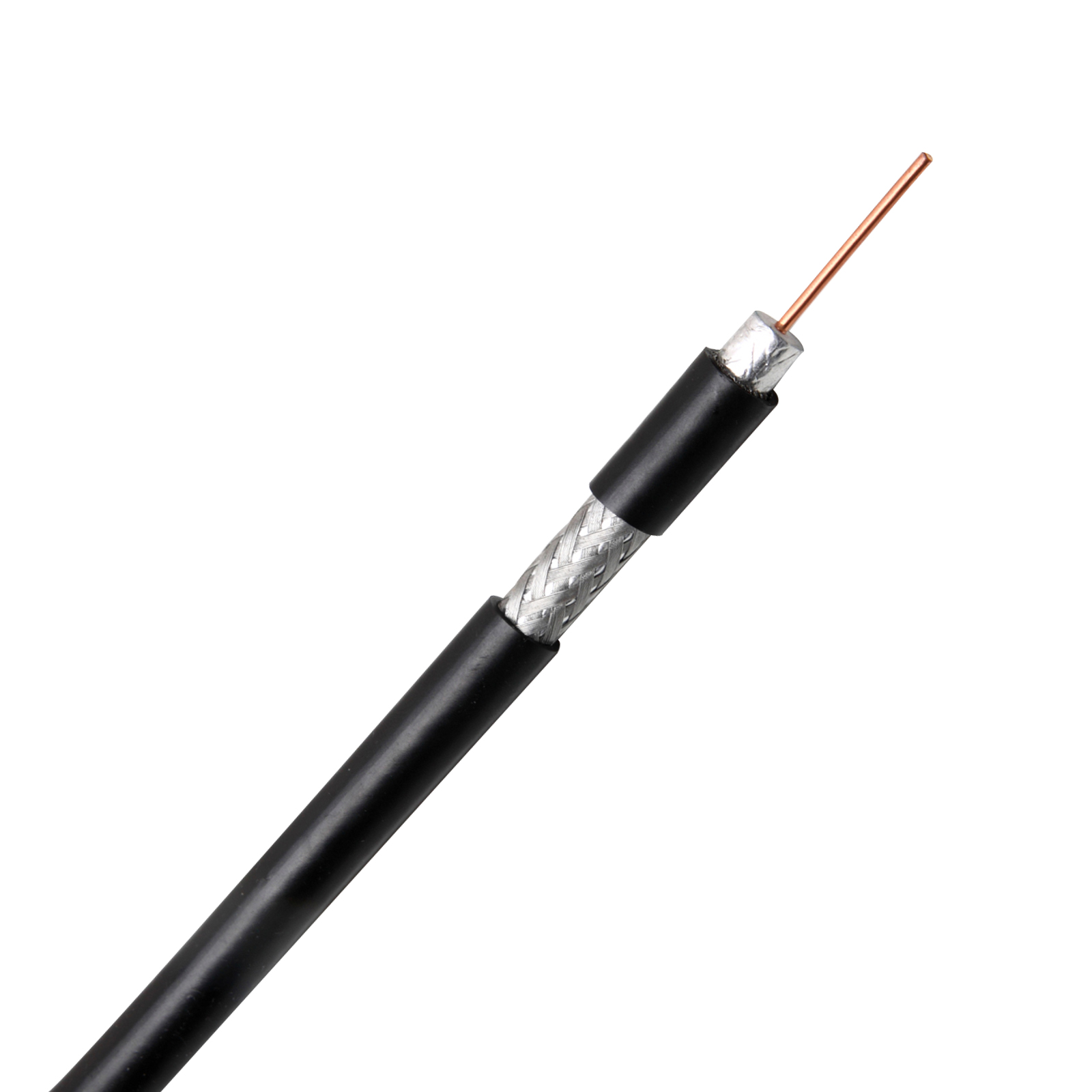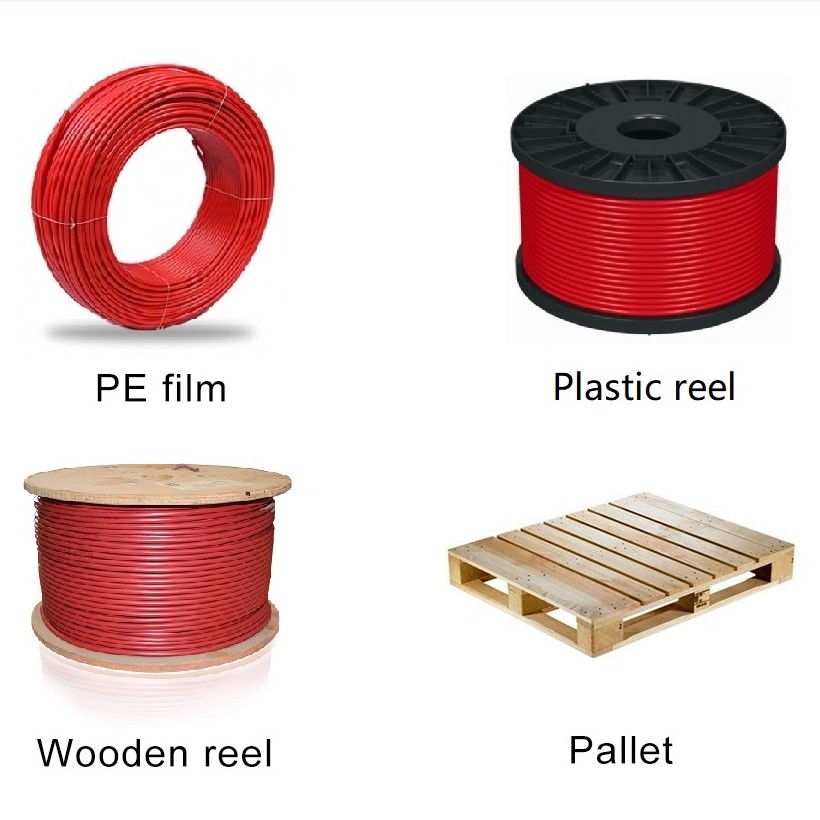Product Main Parameters
| Product Name | RG59 CCTV Cable |
| Jackets | PVC, LSZH, PE |
| Conductor | 0.81mm 20AWG CCS |
| Usage | VIDEO/CCTV |
| Connector | BNCDC |
| Origin | Hangzhou Zhejiang |
Common Product Specifications
| Type | RG59 with power cable |
| Weight | 5.2KG/100m |
| Dielectric | 3.7 FPE |
| Shield | Bond al foil128*0.12 AL/CCA braiding |
| Impedance | 75 ohms |
| Jackets | PVC for indoor/ Black PE for outdoor |
| Color | Customized |
Product Manufacturing Process
According to authoritative papers on cable manufacturing, the production of RG59 coaxial CCTV cable involves several steps to ensure high quality and reliable performance. The process begins with the selection of the conductor material, typically copper-coated steel (CCS) for its balance between conductivity and tensile strength. The conductor is then insulated with a dielectric material, usually foamed polyethylene (FPE), which helps maintain consistent impedance and reduces signal loss. A metallic braid, often aluminum, is wrapped around the dielectric, providing shielding from electromagnetic interference (EMI) and radio frequency interference (RFI). The cable is finalized with an outer jacket made from materials like PVC or PE, chosen for durability and environmental protection. This meticulous process ensures the cable can support high-frequency transmission up to 3 GHz, making it suitable for CCTV, satellite TV, and video surveillance applications.
Product Application Scenarios
As observed in various studies, RG59 coaxial CCTV cables are predominantly used in analog CCTV systems, where long transmission distances without significant signal degradation are required. These cables are effective in both commercial and residential surveillance setups, providing robust and secure video signal transmission for monitoring purposes. In scenarios where electromagnetic interference (EMI) is a concern, such as near industrial machinery or broadcast stations, RG59 cables are preferred due to their superior shielding capabilities. Additionally, these cables are suitable for outdoor installations, where their rugged jackets can withstand environmental stresses. For surveillance in large facilities, RG59 cables offer a cost-effective solution while ensuring the integrity of video signals over extended cable runs.
Product After-Sales Service
Our manufacturers provide comprehensive after-sales service for the RG59 coaxial CCTV cable, including technical support, warranty terms, and replacement options. Customers can reach support through various channels for troubleshooting and installation guidance.
Product Transportation
Our RG59 coaxial CCTV cables are shipped using standard export packaging to ensure safe transit. We offer flexible delivery options to accommodate different customer needs, leveraging partnership with reliable logistics providers.
Product Advantages
- Durable and robust design for long-lasting performance
- 95% or more shielding coverage for EMI/RFI protection
- Cost-effective solution for CCTV installations
- Compatible with standard CCTV equipment
- Customizable jackets and connectors to meet specific needs
Product FAQ
- Which environments are suitable for installing this cable? Our manufacturers recommend using the RG59 coaxial CCTV cable in both indoor and outdoor environments, offering protection against physical and environmental stresses.
- Can this cable be used with digital CCTV systems? While primarily designed for analog systems, with appropriate adapters, it can be used in digital CCTV setups.
- What is the maximum transmission distance for the RG59 cable? The RG59 cable can reliably transmit video signals over distances up to 750 feet without significant signal loss, depending on installation conditions.
- Is the cable suitable for PoE (Power over Ethernet) systems? No, RG59 cables do not support PoE as they are primarily coaxial cables designed for analog video transmission.
- What is the advantage of CCS conductors? CCS conductors offer a balance of strength and conductivity, optimizing the cable for long-distance signal transmission.
- How to deal with cable interference issues? Ensuring proper grounding and avoiding close proximity to high-voltage lines can minimize interference.
- Are the cables weatherproof for outdoor use? Yes, our manufacturers provide options with PE jackets for enhanced weatherproofing.
- What type of connectors are used for this cable? Standard BNC and DC connectors are used, which are widely compatible with CCTV systems.
- Can the cable jacket color be customized? Yes, we offer customization options for the outer jacket color to meet your branding or installation requirements.
- What is the warranty period for these cables? Our manufacturers offer a standard warranty period, details of which are provided during purchase.
Product Hot Topics
- Importance of Choosing the Right CCTV Cable Manufacturers Selecting reputable manufacturers for CCTV cables, like RG59, is crucial for ensuring product quality and system reliability. Top manufacturers adhere to stringent quality protocols and provide technical support, assuring customers of the product’s performance. Moreover, reliable manufacturers often offer customization options to meet specific project needs, adding value beyond just the product.
- CCTV Cable Installation Best Practices Proper installation of CCTV cables like RG59 is vital for optimal performance. Key practices include ensuring that cables are not bent beyond their bend radius, are properly grounded to prevent interference, and are routed away from high-voltage lines. Following these guidelines can significantly enhance the longevity and reliability of the cable, minimizing maintenance and replacement costs.
- Comparing RG59 and Fiber Optic Cables for CCTV Systems While both RG59 and fiber optic cables have their advantages in CCTV applications, the choice largely depends on project requirements. RG59 is preferred for its cost-effectiveness and ease of installation for moderate distances. In contrast, fiber optic cables offer superior data transmission and are ideal for long-distance applications, albeit at a higher cost. Understanding the application specifics helps in deciding the suitable cable type.
Image Description
